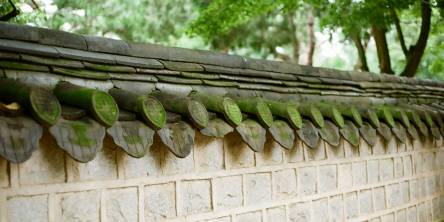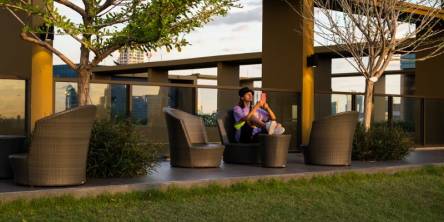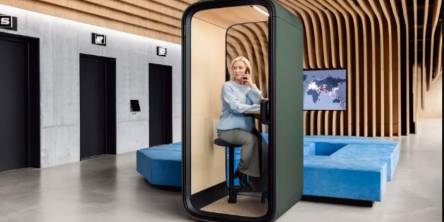Smooth and Strong: Self-Leveling Screeds are Redefining Flooring Solutions

Concrete flooring has come a long way from its humble beginnings. What was once seen as purely functional has now evolved into a foundation for innovative, aesthetically pleasing, and durable surfaces.
Over the years, the evolution of concrete screeding technology has led to remarkable advancements, ensuring smoother finishes and enhanced durability. Today, these advancements are reshaping how we approach concrete flooring, offering solutions that are not only practical but also aesthetically stunning.
Understanding Concrete Screed
Concrete screed refers to a mixture of cement, sand, and water that gives off a smooth surface to a base or subfloor. It works like a thin membrane between the structural floor and the final flooring material, mainly tiles, wood, or carpet.
There are two main types of screeds in concrete:
● Traditional Screeds: These need to be manually leveled by the technician using tools like a straight edge or screeding bar.
● Self-leveling screeds: These naturally flow to create a smoother surface while requiring minimal effort.
From Traditional to Modern: The Rise of Self-Leveling Screeds
Among the modern innovations in flooring, self-leveling screeds have emerged as a revolutionary option. Unlike traditional screeds, these flow easily and spread across surfaces to create a smooth finish. This simplifies the installation process, saving both time and labor.
But the benefits don't stop there. Self-leveling screeds are versatile for applications in high-traffic commercial spaces like shopping malls, as well as residential kitchens and bathrooms.
They offer strength and durability, making them ideal for environments where flooring must endure heavy loads and constant wear. Moreover, the quick curing time means projects can be completed faster, minimizing downtime.
They can create seamless, polished finishes that have become a favorite for modern interior designs. Additionally, these screeds are compatible with various floor coverings, from tiles to wood, and can even be used with underfloor heating systems for added comfort.
Tips for Choosing and Applying Self-Leveling Screeds
For best results, consider the following when selecting and applying self-leveling screeds:
● Choose the Right Product
First, think about how the floor will be used. Will it hold heavy equipment, handle lots of foot traffic, or just be used in a home? Pick a screed that’s strong enough for the job. Finally, consider the room’s environment. For example, if the space is humid or the floor is often wet, choose a screed that can handle moisture.
● Prepare the Surface
Sweep or vacuum away dust, dirt, or grease. Then, add a primer to the floor. A primer helps the screed stick better and prevents bubbles from forming. Look closely at the floor to see if there are big dips or bumps. While self-leveling screeds can fix small uneven spots, larger problems might need to be smoothed out first.
● Follow Best Practices
To apply the screed correctly, follow the instructions that come with it. Mix it properly—don’t add too much water, as that can make it weak. Once it’s mixed, work quickly because the screed starts to set fast. Spread it evenly to cover the floor. For big or tricky spaces, it’s a good idea to hire an expert to help. After spreading the screed, let it dry completely before walking on it or adding tiles, wood, or other finishes.
Sourcing The Right Flooring Is Crucial
Whether you're looking to upgrade your industrial floors or create a sleek finish for your home, partnering with reliable UAE chemical suppliers ensures you get durable, efficient, and cost-effective products. With their support, you can achieve flooring that’s both smooth and strong—a true testament to the power of modern flooring technology. It’s an investment that affects the functionality, comfort, and value of your property.
Similar Articles
The exterior of your home is the first thing to deal with the elements and with each season, your home will be challenged in a certain way.
Most pests enter homes through cracks, gaps, or food sources, but bed bugs take a very different path
Every yard has challenges — a slope that limits space, soil that shifts after rain, or uneven ground that makes it hard to enjoy.
A skillion roof garage is a modern and practical solution for homeowners and property owners who need extra storage or workspace
Bathrooms have transformed over the last few decades. Once seen as purely functional spaces, they are now designed as retreats — private sanctuaries for relaxation, reflection, and rejuvenation.
Your backyard holds untapped potential. Right now, it might be nothing more than a patch of grass, a few scattered plants, or an underutilized space that you glance at through your kitchen window.
Enhance productivity and privacy by transforming your workspace with a soundproof phone booth—ideal for calls, focus, and modern office needs.
As families grow, the need for more space becomes inevitable. Deciding whether to renovate your current home or relocate to a larger one involves careful consideration of financial and logistical factors
Painting a house sounds simple. Pick a color, grab a brush, and go. But one big step often gets skipped. That step? Pressure washing.









